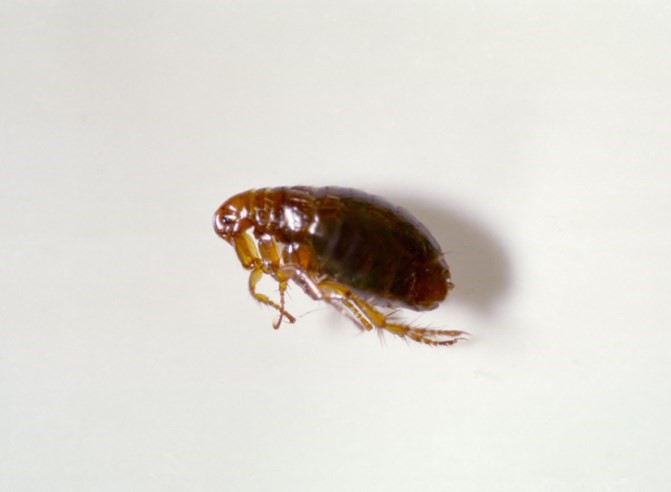How do I protect my pet from fleas and ticks?
Our furry friends can be some of our closest companions. That’s why it’s helpful to know how to protect your pet from fleas AND ticks. In honor of National Pet Week, Massey Services not only wants to provide helpful tips on how you can protect your furry friends but also educate you on these pests.
Why are ticks and fleas such a problem right now?
During this time, a lot of us are going outdoors once, twice or even three times a day to walk around, get some fresh air and keep your pets (mostly dogs) active by walking them outside or letting them play in your backyard. Unfortunately, where we live, fleas and ticks are active year round. In the South, fleas are especially active when the weather warms between April and June.
Why are pets more susceptible to fleas and ticks compared to humans?
Fleas will feed on any warm-blooded body, including humans. However, they prefer to dine on hairy animals including dogs, cats, rabbits, mice, etc. American Dog ticks, the most common tick attracted to animals, are more attracted to the scent of your pet rather than to human scent which is why they are more problematic for animals.
What do ticks look like?
The American Dog Tick is also known as a wood tick. They prefer to feed on domestic dogs.
Habitat:
- Often found along roads and trails
- Prefer grassy areas with low vegetation where larger animals pass by
- Thrive in areas where grasses, bushes and plants are accessible to humans
Facts:
- They can survive two to three years unfed
- The female tick can lay as many as 6,500 eggs within 14-32 days
- There are over 90 types of ticks in North America (most common are dog ticks, wood ticks and backlegged ticks)
What do fleas look like?
Fleas are the most prevalent parasite found on fur-bearing animals, such as dogs and cats.
Habitat:
- Often in high grass, sand, sheds or debris – any place where they can find shade and humidity
- Transport themselves on rodents and other mammals
Facts:
- Fleas will mate and lay eggs that often fall into yards, on bedding, carpet or blankets
- Fleas do not fly but instead jump from one place to another
- Often feed on animals and humans
What are the diseases my pets can get from fleas and ticks?
One of the biggest things to worry about when it comes to fleas and ticks is not only how to control them from reproducing in your home BUT also the kind of diseases they carry and can potentially give to your pet and, in some instances, can be given to you.
Fleas and ticks are a frequent pet care concern in America. That’s why knowing the harm they can bring your pet is important. Here are the diseases animals can get from fleas and ticks:
–Tapeworm: an intestinal parasite
-Dermatitis
–Lyme Disease: a disease caused by bacteria Borrelia burgorferi
-Rocky Mountain Fever: tick-borne disease that affects dogs and humans
-Babesiosis: disease caused by the bite of a tick but can also transfer from dog bites, transplacental transmission and possibly through contaminated IV blood.
-Bartonellosis: emerging infectious disease in dogs, cats and humans
-Hepatozoonosis: infection is acquired after dog ingests an infected tick
Here are several additional steps you can take to protect your pet from fleas and ticks:

It’s not only important to know how to get rid of fleas and ticks but also the small things you can do to prevent them.
To prevent ticks from harming your pets, make sure to keep the grass around your home well-trimmed and inspect pets closely after outings. American Dog Ticks can bite humans too! It’s important that you remember to wear insect repellent containing an EPA-registered ingredient such as DEET. Also consider wearing light colored long sleeve shirts and pants – this makes it easier to inspect your skin and clothing before heading indoors.
To prevent fleas from your pets, here are several recommendations:
- INSPECT! After walks or playtime outside, inspect your pet thoroughly. You should brush their coat and remove any debris or insects.
- Bathe your pets regularly, using a shampoo that kills pests.
- Be on the lookout for excessive scratching. This is a good indicator they have skin irritations.
- If your pet has long hair, consider having them groomed in the spring and summer. This prevents fleas and ticks from latching on AND allows you to spot them easier if they do.
- See the vet! Consult with your veterinarian to determine what preventive medicine you should give your furry friend.
- Wash your pet’s bedding, crate, toys, food bowls and sleeping areas on a regular basis.
- If you notice a change in your animal’s behavior, such as lack of energy or appetite, take them to the vet immediately. It could be a sign of Lyme Disease or another health issue caused by pests.
- Keep your home clean and clutter free!
- Vacuum frequently and wash linens on a regular basis.
- Keep your lawn cut short and gardens well-maintained to prevent breeding grounds for pests. Fleas often hide out in tall grasses.
Dealing with fleas and ticks can be an overwhelming situation especially when your fur-ever friend has become irritated or ill because of them. Knowing what to do and how to prevent these pesky insects is key to protecting yourself and your pet! While ticks do not tend to reproduce inside, fleas do! If you notice fleas or think you have a flea infestation in your home, call us right away or complete the free inspection form below.
Our professionals are trained to get rid of existing flea infestations and provide preventive services on the exterior of your home.

